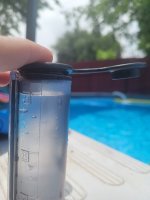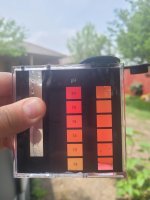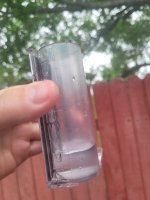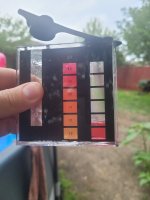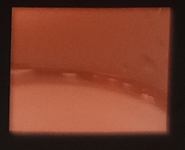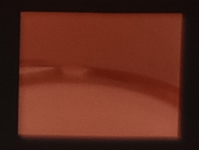Hey guys, I've been correcting my TA since my water here is around 220ppm, so I've been keeping my pH at 7 and checking 3 or 4 times a day and just adding a bit of muriatic acid to correct it down to 7-7.1 and aerating nonstop. My TA has slowly been drifting down and is at 140 now. I'm hoping once my TA is in a good range, my pH will stop going back up. Every day it seems to raise back up to about 7.4 if I add no acid. My water is crystal clear compared to when I started this treatment.
I have 2 unimportant questions that simply make me curious.
1. Will my pH stop drifting back up every day when my TA is 80ish? Or will it all just keep constantly go up and i'll need to add small amount of acid nonstop perpetually?
2. The actual point of this post. Since I'm testing so often, I don't want to waste much of the fluid. I have the k-2006 kit and I fill the large tube to 44ml, add 5 drops of R-0004 (pH Indicator Solution - Phenol Red) and compare in the tube to the 7-8 reference color samples - this is how you're supposed to do the pH test with this kit. I know my pH will always be 7-7.4 since I'm doing it multiple times a day. Today, I did the 44ml of water and 5 drops and my pH was 7 on the dot. So I decided to instead fill the tube to 9ml and add 1 drop, expecting it should give the same result, but it didn't. The color was waaaaay darker., probably a shade closer to what I'd assume an 8.5 would be.
I assumed the 44ml thing is just so you have enough water vertically in the tube to reference left to right the colors on the gauge, and if you simply cut the water to 1/5th and cut the R-0004 to 1/5th, it should give the same result but it'd just be hard to compare since the water doesn't go all the way to the top. Anyone who knows how this stuff actually works know why this isn't the case?
I have 2 unimportant questions that simply make me curious.
1. Will my pH stop drifting back up every day when my TA is 80ish? Or will it all just keep constantly go up and i'll need to add small amount of acid nonstop perpetually?
2. The actual point of this post. Since I'm testing so often, I don't want to waste much of the fluid. I have the k-2006 kit and I fill the large tube to 44ml, add 5 drops of R-0004 (pH Indicator Solution - Phenol Red) and compare in the tube to the 7-8 reference color samples - this is how you're supposed to do the pH test with this kit. I know my pH will always be 7-7.4 since I'm doing it multiple times a day. Today, I did the 44ml of water and 5 drops and my pH was 7 on the dot. So I decided to instead fill the tube to 9ml and add 1 drop, expecting it should give the same result, but it didn't. The color was waaaaay darker., probably a shade closer to what I'd assume an 8.5 would be.
I assumed the 44ml thing is just so you have enough water vertically in the tube to reference left to right the colors on the gauge, and if you simply cut the water to 1/5th and cut the R-0004 to 1/5th, it should give the same result but it'd just be hard to compare since the water doesn't go all the way to the top. Anyone who knows how this stuff actually works know why this isn't the case?


